This little Savannah Sparrow was one of my most memorable birds on our recent Montana camping trip. It was a fearless and a relentless hunter.
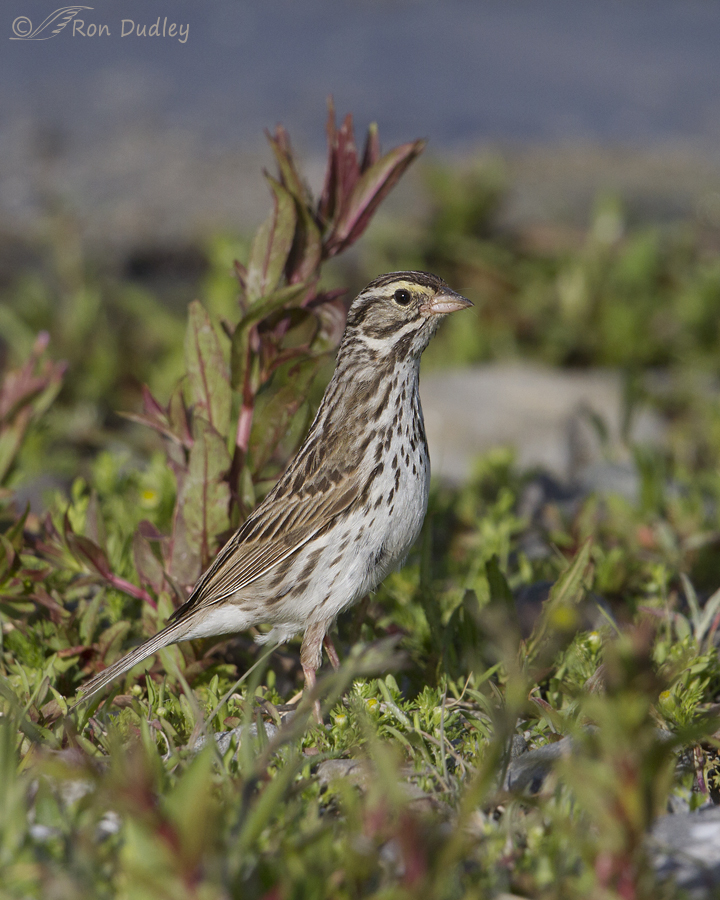
1/3200, f/5.6, ISO 640, Canon 7D, Canon EF500mm f/4L IS II USM +1.4tc, not baited, set up or called in
The sparrow could always be found hunting for insects in the same spot on the shore of Lower Red Rock Lake – you can begin to see the lake in the upper background of this shot. On some days it was feeding a single fledgling that was following the adult around. I never noticed this birds mate or any other fledglings but that’s not surprising because after fledging the adults usually divide the brood evenly with each parent feeding and guarding 1-2 youngsters.
I’ve never seen a sparrow that was a better or more determined hunter than this one. If the insects were small she would cram her bill full and then feed them then and there to the fledgling if it was close by. If the young bird was hiding in the grasses it would usually fly in that direction with the food and then return within seconds for more. The sparrow had absolutely no fear of my pickup (as usual I was shooting from there) and would often approach it to within less than a foot or two – the angle would be so steep and the bird so close that I couldn’t focus.
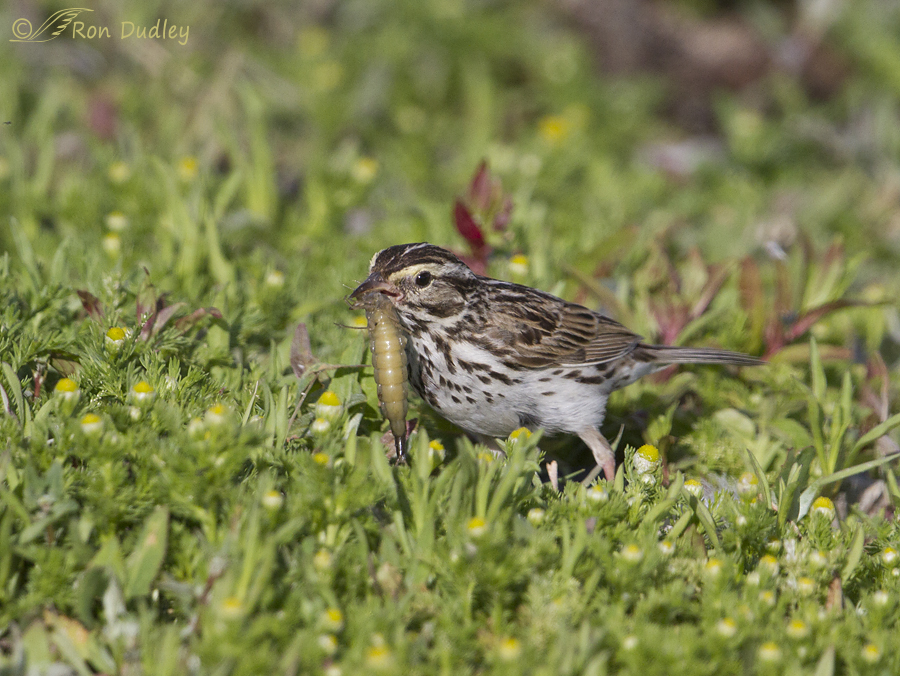
1/4000, f/5.6, ISO 640, Canon 7D, Canon EF500mm f/4L IS II USM +1.4tc, not baited, set up or called in
But sometimes the prey it tackled was very large compared to the size of the sparrow and this is an example. I wish I knew for sure what species this prey item was. It looks somewhat similar to some dragonfly larvae but I don’t think that’s it and my biology background was never heavy into entomology. It’s segmented, has two “tails” and there are appendages on several anterior appendages. This shot gives a relatively good view of the ventral surface.
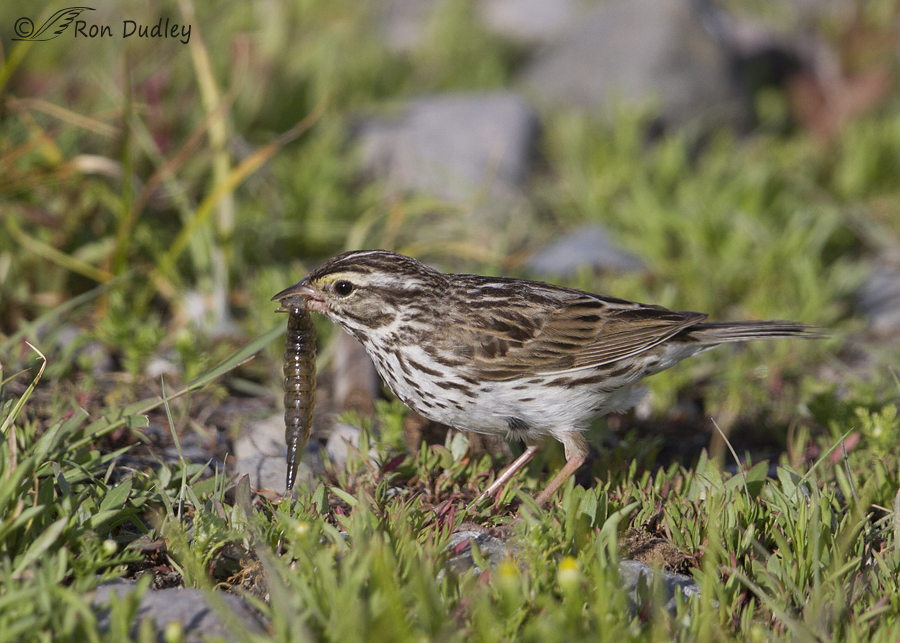
1/4000, f/5.6, ISO 640, Canon 7D, Canon EF500mm f/4L IS II USM +1.4tc, not baited, set up or called in
Here’s a look at the dorsal surface. In previous years I’ve seen Savannah Sparrows consume the same species near the lake but they’ve always been much smaller than this one.
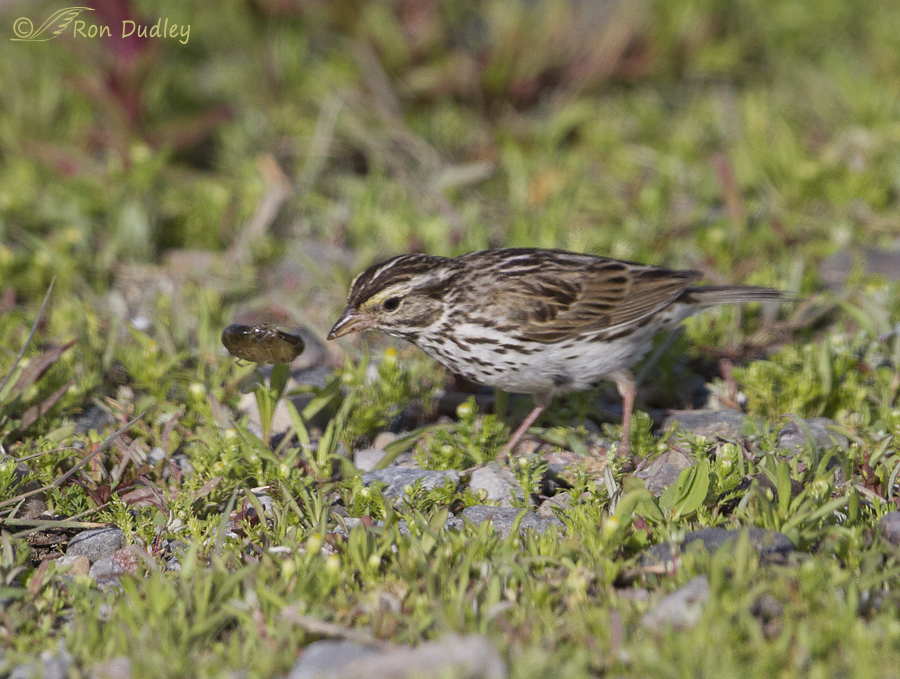
1/5000, f/5.6, ISO 640, Canon 7D, Canon EF500mm f/4L IS II USM +1.4tc, not baited, set up or called in
When the insect was first caught the sparrow repeatedly and quickly bit at the head and then flung it aside, as it’s doing here (the prey is flying through the air). I had the distinct impression that the bird was trying to avoid being bitten.
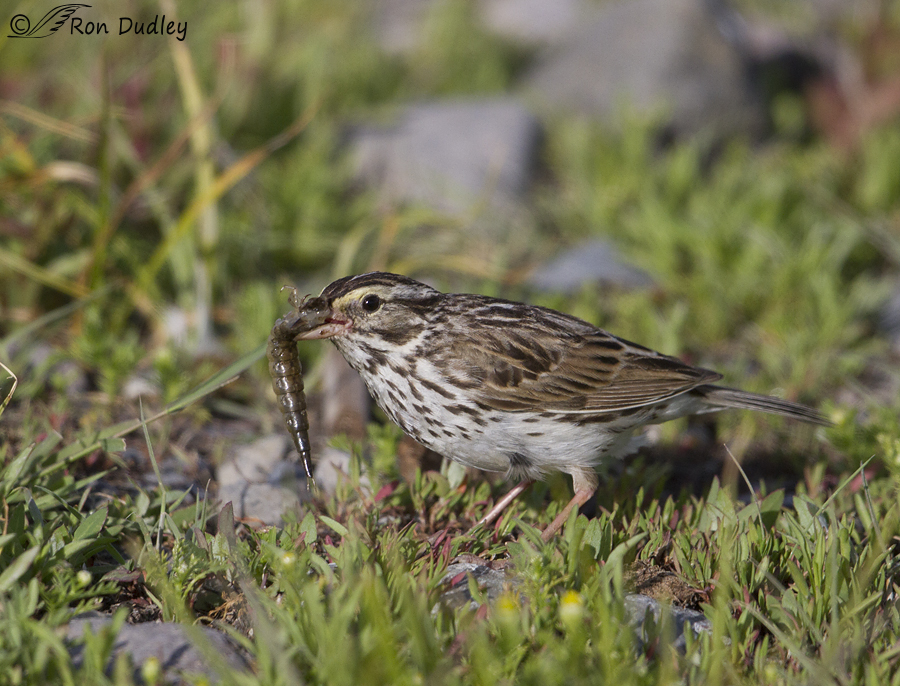
1/4000, f/5.6, ISO 640, Canon 7D, Canon EF500mm f/4L IS II USM +1.4tc, not baited, set up or called in
This might be the best single look I was able to get of the insect…
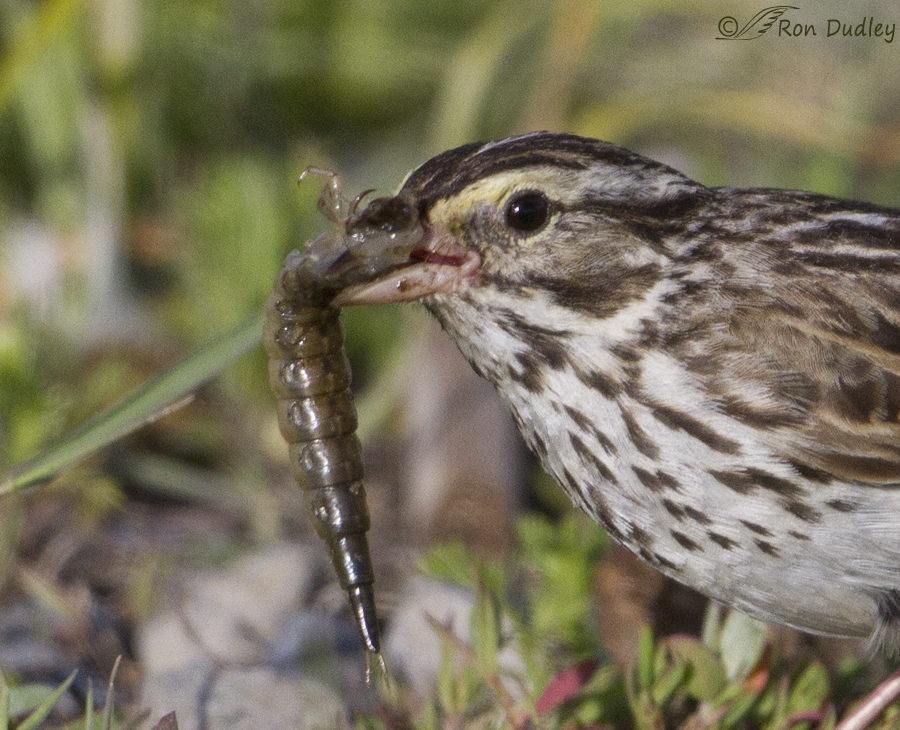
1/4000, f/5.6, ISO 640, Canon 7D, Canon EF500mm f/4L IS II USM +1.4tc, not baited, set up or called in
especially when the image is cropped very heavily. The anterior pair of appendages look like they might be modified into fangs and if so I can certainly understand why the sparrow was being so careful. Sometime in the future I’ll post images of this bird with other prey and feeding the fledgling but for now I’d sure like to know for sure what species this prey item is.
Any thoughts on that subject would be appreciated.
Ron


Great captures! I also love the little birds like these.
Ron,
My guess is that this is the larva of some kind of predatory ground beetle. Some diving beetles look similar (at least to us non-insect specialists) but I would not expect a Savannah Sparrow to feed on submerged insects. The ground beetles could be on damp vegetation where the sparrow might easily forage, but not underwater. But it’s just a guess. I’m an ornithologist with only a limited knowledge of the multiple varieties of insects. Let us know when you have a more certain identification. I, and I suspect many others, would certainly like to know.
i shouldn’t read these when i am having a quick bite to eat-Ugh.
Love the dragon-slayer – even if it does have eyes too big (or nearly) for its stomach. And I hope that it was food for itself. Devoted parenting is hard work.
“Devoted parenting is hard work.”
That was impressed on me many times during this trip with the Savannah Sparrow, House Wrens and two species of sapsuckers, Elephant’s Child. And even though they put in the work there’s no guarantee of success. This morning I revisited the Western Kingbird nest I’ve posted about recently (it’s been about 10 days since I’ve been there) and it looks like it’s been abandoned. Don’t know why but it’s sad…
Very sad indeed. Yes I know it happens – but it still hurts my heart. I will continue to celebrate every success and mourn for the failures.
That’s all we can do. What happened may have been natural but the nest was so close to the road (and people) that I’ll always wonder…
I love these photos. You have an amazing ability to capture behaviors with your camera. And it looks like the prey could definitely be a predaceous diving beetle larva. The only one of those beetles I’ve ever seen was about half an inch long – maybe a little more – out in the desert at Hueco Tanks last year after heavy rains in September, so I had to look up info about them to believe that this could be a larva for that kind of beetle. Isn’t it wonderful when information comes together from several sources to give you a good answer? It always makes my day when that happens to me.
Thanks, Susan. As you know, I love photographing (and observing) behaviors. And yes, I very much appreciate it when readers more schooled than I on a subject share their knowledge.
What a sensational series of shots Ron!
Charlotte
Thank you, Charlotte.
The prey item looks superficially like a Dytiscidae larva, althoughthat is just a thought. Some images at this site:
https://www.google.com/search?q=Dytiscidae+larvae+image&ie=utf-8&oe=utf-8&aq=t&rls=org.mozilla:en-US:official&client=firefox-a&channel=sb
Your shots continue to amaze.
That link was very helpful and you very well may be right, Bob. Some of them look quite close to this prey item and they can be up to 2″ long. At first I thought it wasn’t likely because from what I can tell the Dytiscidae larvae (many different species) are aquatic but I found this: “the larva crawl from the water on the sturdy legs, and bury themselves in the mud for pupation.” Since this sparrow plucked the insect from very near the lake shore it may have been there to pupate. Thanks very much, Bob!
That’s got to be one tough little bird to handle prey as fierce looking as that! That larva looks so big I’d expect the baby that receives it to have a tough even time swallowing it. ..and once down, not to be hungry again for a long, long time!
Patty, I’m not positive the parent gave this insect to the fledgling. It flew off with it but it could have eaten it rather than giving it to the youngster in the grass (which I couldn’t see at the time).